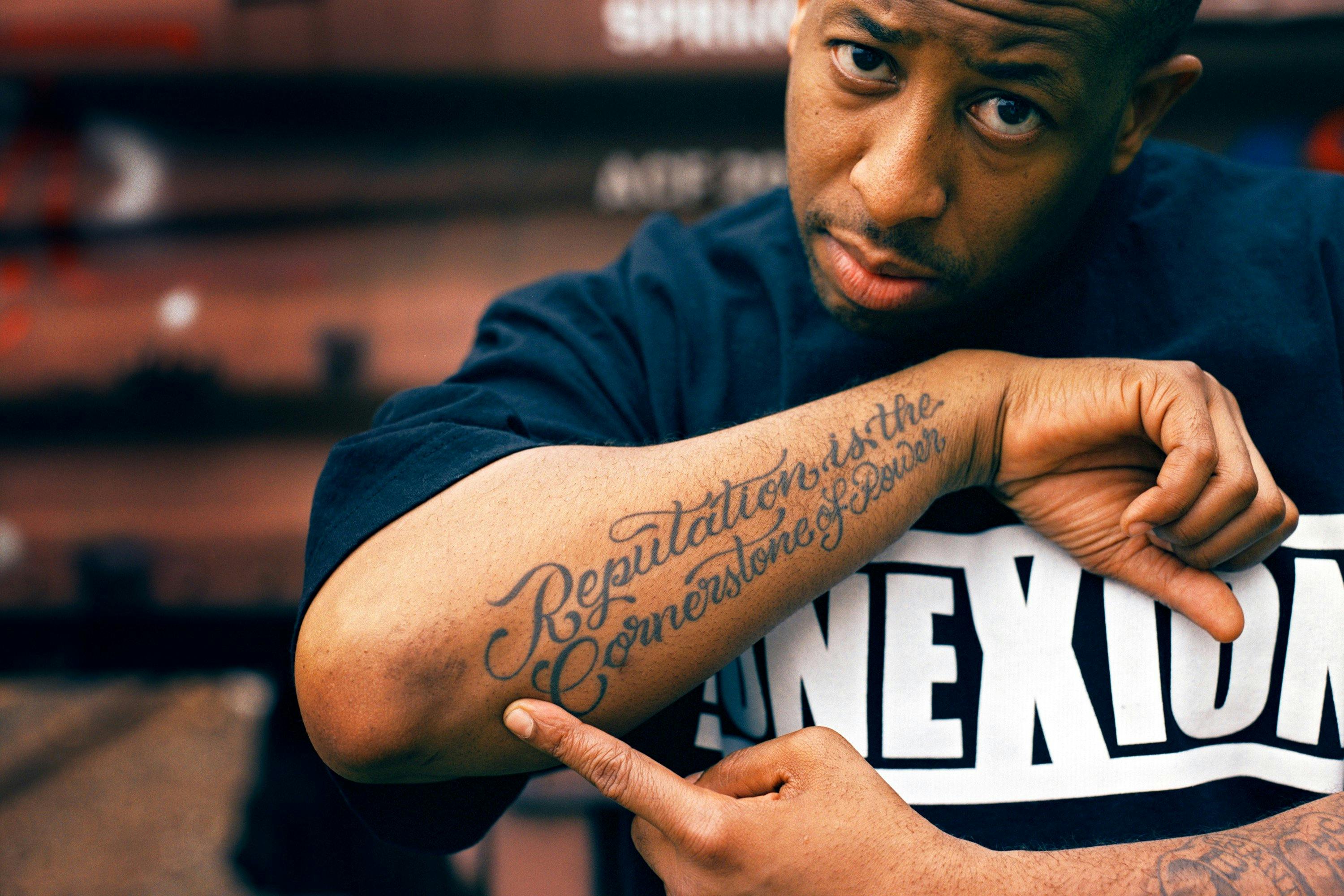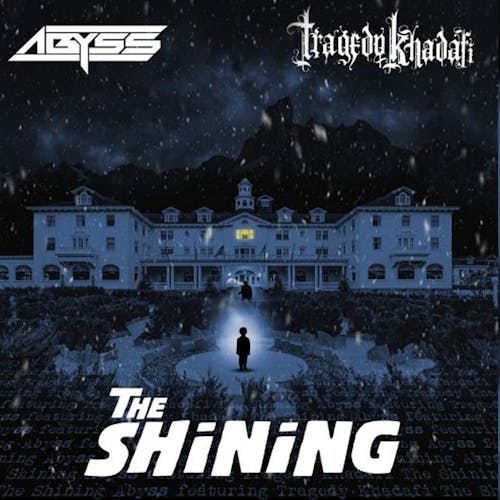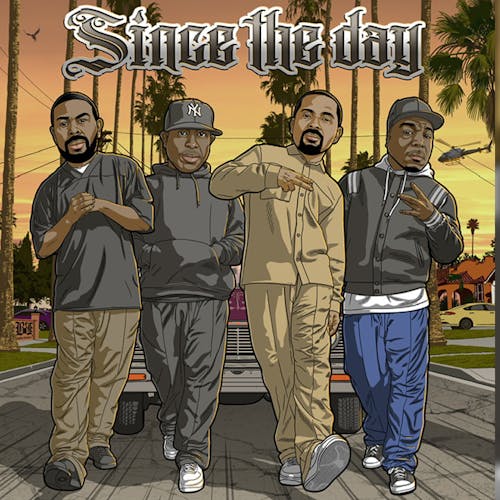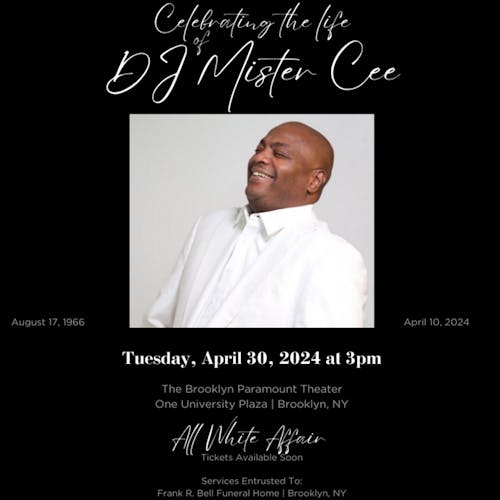
How Soundwaves Records Laid the Foundation for DJ Premier
How Soundwaves Records Laid the Foundation for DJ Premier
By Alec Banks
Published Mon, September 28, 2020 at 1:25 PM EDT
In 1972, Texas Southern University, located in the heart of Houston’s Third Ward, began broadcasting KTSU radio on a 10-watt FM station. In time, KTSU became the No. 1 public radio station in the country with an African American listenership for years, and its “Sunday Morning Gospel” program also earned a No. 1 rating in Houston.
By 1981, the station continued to flourish under the stewardship of general manager Charles Porter, one of the first African-American broadcasters in the city. He saw KTSU not only as a viable business in Space City but also as a way to empower teenagers to share their voices and learn how to run a radio program. He tapped his own children, Stacy and Charles Jr. — then both in high school — as well as Michael Mitchell to create a show on KTSU that was aimed at kids.
Since Hip-Hop music wasn’t readily available in Houston at the time, “Kidz Jamm” played popular R&B and pop music of the era. This all began to change when Lester “Sir” Pace came to work for the show. In high school, Pace excelled in extracurricular activities such as speech and debate, so not surprisingly, when he first heard Hip-Hop, he knew it was for him.
On one occasion, Pace was left in charge of programming “Kidz Jamm.” Much to the chagrin of program director Pam Collins, Pace began playing Hip-Hop. Although she called into the station and ordered him to stop, she slowly warmed to the idea of providing a platform for the New York City-born art form.
Every Saturday between 10 a.m. and 2 p.m. “Kidz Jamm” became the place for Hip-Hop in Houston, breaking notable debuts from artists like Scarface and Real Chill. Although KDAY in Los Angeles is often credited as the first Hip-Hop radio station, “Kidz Jamm” made its radio debut at approximately the same time and lasted longer.
In Los Angeles, kids skated to Hip-Hop at Skateland. In Houston, Super Skate and Rainbow were the city’s equivalents. Hip-Hop had officially arrived, it just needed a physical space to blossom beyond the airwaves.
In 1977, Bellaire High School graduate Jeff Spargo opened his first Soundwaves music store, near Houston’s Hobby Airport. Soon after, he opened a second location on South Main near the Astrodome, which carried jazz, blues, R&B, funk, and soul. As Hip-Hop began gaining traction, Spargo needed someone who could speak the language.
Carlos Garza, eventually known as DJ Styles, and his family immigrated from Reynosa, Mexico, to Houston in the 1970s. Growing up, he was profoundly impacted by films like Beat Street and Breakin’.
“When I saw the graffiti, breaking, MCing, and DJing. I was like, ‘That’s what I want to do,’ ” Garza says. “That’s me. That's what I want to do for the rest of my life.”
He was especially drawn to breaking. By the mid-1980s, he began breaking under the name DJ Pace Master, ultimately forming the Dynamic Crew, which earned a reputation for battling at clubs like Turning Point and Club Escapade. Garza ultimately shifted from b-boying to DJing — opting for the new moniker DJ Styles under the tutelage of local DJ Drew Johnson.
Inspired by the songs he heard on “Kidz Jamm,” Garza often frequented Soundwaves looking to build out his vinyl collection.
“During the summer, I would work at AstroWorld,” Garza says. “I would go from AstroWorld to Soundwaves, and that’s when I would buy the records. At that time Soundwaves was not the Soundwaves I would later know. They were more rock and roll.”
His interest eventually led to a job under managers Terry and Patti Pantoja, who still had Hip-Hop records placed in the rock section.
“I really didn’t have a plan, to be honest,” he says. “I didn't know what I wanted to do. But I did love Hip-Hop.”
Garza made it a point to curate a dedicated Hip-Hop section. As burgeoning labels like Tommy Boy, Def Jam, Cold Chillin’, and Wild Pitch Records caught wind of Garza’s dedication, Soundwaves ultimately became a point of focus in their attempt to grow outside of New York City.

DJ PREMIER. / Photo By JONATHAN MANNION
Chris Martin, eventually known throughout the world as DJ Premier, grew up in a household filled with music. His mother was a painter, and the sounds of the Temptations, Jackson 5, Stevie Wonder, Marvin Gaye, Al Green, Curtis Mayfield, Barry White, Aretha Franklin, Natalie Cole, Grover Washington, Booker T & the MGs, and the Bar-Kays filled the living room as she worked.
“By the time I was 4 or 5 years old getting ready to go to kindergarten, I was just addicted to the Jackson 5 because Michael still looked like a little kid,” Premier says. “He’s doing all those dance moves. For that to exist in Texas at that time, you had to be in the scene and in the know by knowing somebody that was connected to what we consider being cool.”
His two older sisters also contributed to his music education through the acts they followed, such as the Eagles, Carly Simon, the Osmond Brothers, the Bee Gees, and Van Halen. Although he enjoyed their music immensely, he was completely enamored of the imported Hip-Hop sounds from New York City.
“There’s always an underground scene that develops into something bigger as it spreads,” Premier says. “I hate to say it, but like diseases do. Once it gets widespread, it becomes an epidemic. Music is the same way. Hip-Hop was a new thing because it borrowed from everything that already existed that our parents played. Every Black mother and father had Barry White, Curtis Mayfield, Minnie Riperton, Aretha Franklin, the Commodores, Earth, Wind & Fire, Sly and the Family Stone.”
While Houston would ultimately serve as the backdrop for Premier’s music education, his yearly trips to stay with his grandfather in Brooklyn exposed him to Hip-Hop firsthand. Their rituals included attending Yankees Games in the Bronx, watching the breakers in Times Square, and listening to the DJs spinning songs like the Jimmy Castor Bunch’s “It’s Just Begun” and Liquid Liquid’s “Cavern.” His grandfather warned him that there was no future in playing records, but Premier was officially bitten by sonic earworms like the Sugarhill Gang’s “Rapper’s Delight,” the Treacherous Three’s “Body Rock,” and Spoonie G’s “Spoonin’ Rap.”
“It makes money, it makes money. You just watch,” Premier recalls telling his grandfather.
As a student at Prairie View A&M University — 45 miles outside of the city — he spun records under the moniker DJ Chris. He admits the other DJs at HBCU weren’t very good, and that he was on a mission from the get-go to have the most obscure record collection.
Premier credits local Houston artist RP Cola (Randy Pettis), a fellow Prairie View A&M attendee, as the one responsible for his education in scratching, cutting, and mixing.
“I had never seen anybody that had felt pads and [knew?] how to break a record back,” he says, “I was nice and quick mixing and blending, but I didn't know how to cut and work the fader.”
He was a constant presence at Soundwaves. Despite his and Garza’s shared love of Hip-Hop and obscure jazz records, they weren’t fast friends. Garza happened to notice that he was changing the price tags on the records to get himself better deal.
“He had a big old stack,” Garza recalls. “I was like, ‘All right, I'm going to let him do that and wait until he gets to the front. Then I’m going to be like, ‘This is wrong, this is wrong, this is wrong.’ So I made him wait.” And he ended up charging him the original price.
Premier eventually invited Garza to a local gig at Prairie View A&M. Garza ] was hesitant to go, but figured he’d at least check it out. It was the first time he was truly in awe of another DJ.
“I’ll never forget it,” Garza says. “He was cutting up two copies of Morris Day’s ‘Fishnet.’ My God. It was real-time remixing. I thought it was like a prerecorded audio. He was doing mashups before there was mashups. And the other weird thing about it was he would have the turntables side by side.”

DJ PREMIER. / Photo By JONATHAN MANNION
Premier’s distinctive style was simply born out of having more dexterity in his right hand after a rotator cuff injury to his left coupled with his love of the World’s Famous Supreme Teams’ 1984 album cover Would Ya Like More Scratchin’.
“There’s a GLR mixer in the front and the two turntables pressed together behind the GLR mixer,” Premier says. “I’m like, ‘Damn, what do they do, reach over and scratch?’ I should do that style and just put them on one side since I have quick hands as a righty.”
As their friendship grew, Garza learned that Premier was dabbling in production using a four-track setup and turntables to create pause tapes. He also produced for MCs in Control (later called Inner Circle Posse or ICP), a group consisting of fellow Prairie View students.
“I was like, ‘My God, this dude is just amazing,’ ” Garza recalls.
Garza eventually became one of the most important Hip-Hop buyers in Houston. Label heads would often ask if he had heard anything that should be on their radar. Not surprisingly, when Stu Fine of Wild Pitch Records called, Garza told him about DJ Premier.
“He said, ‘Man, you got to hear this DJ who plans on going to New York this summer,’ ” Premier says of Garza’s pitch. “He’s trying to shop a deal. He's incredible. You got to see the way he DJs.”
Premier took his demo to New York City during his junior year of college. Fine liked his production but didn’t respond to MCs Sugar Pop, Stylee T, and Top Ski. He suggested that Premier join another group on Wild Pitch called Gang Starr.
At that point, there had already been two distinct Gang Starr eras: The first consisted of Guru, Big Shug, and Suave D, who created the group at Morehouse College. Eventually, Mike D aka DJ Want2BDown replaced Suave.
Premier didn’t want to join Gang Starr because he felt loyalty to MCs in Control, so much so that was willing to bet his entire career on MCs that he chose.
* Banner Image: DJ Premier / Photo by Jonathan Mannion



